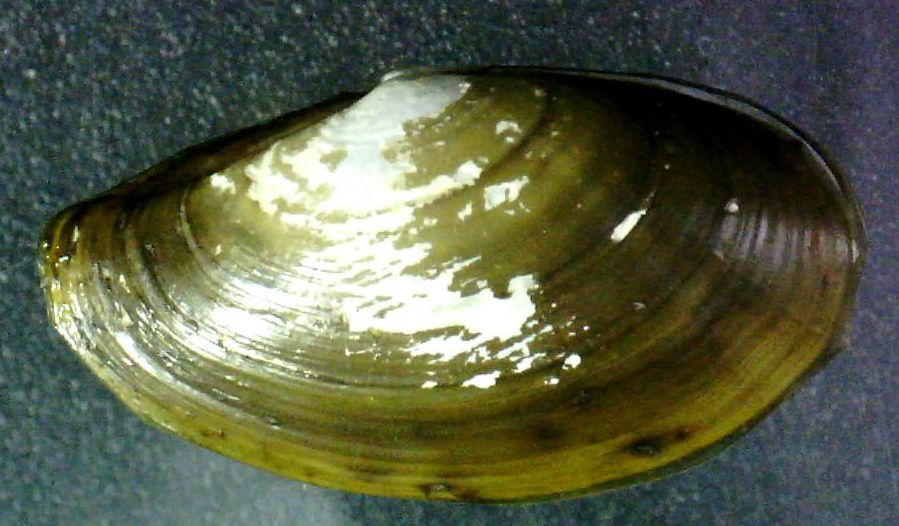Description: Unlike most other bivalves in this area, but characteristic of the Glycymeridids and of other members of Order Nuculoida, this species has taxodont dentition on its hinge (photo). The hinge ligament is internal (photo). The shell is definitely longer than it is high. The outside is fairly smooth and it has no radial ribs or other prominent radial sculpture-just small concentric growth lines. The interior of the valves is pearly (photo), and it has no pallial sinus.
How to Distinguish from Similar Species:Acila castrensis also has taxodont dentition and an internal ligament but it has clear radial sculpturing in a chevronlike pattern (though not actual radial ribs).
Geographical Range: Eastern Pacific and western Atlantic Ocean.
Depth Range:
Habitat: In fine sediment offshore.
Biology/Natural
History:
| Return to: | |||
| Main Page | Alphabetic Index | Systematic Index | Glossary |
References:
Dichotomous Keys:Carlton, 2007
Kozloff, 1987, 1996
General References:
Coan, E.V., P. Valentich-Scott, and F.R. Bernard,
2000.
Bivalve seashells of western North America. Santa Barbara
Museum
of Natural History, Santa Barbara, CA. 764 pp.
Scientific Articles:
Web sites:
General Notes and Observations: Locations, abundances, unusual behaviors:
This shell was found ilive n the catch from a small otter trawl at 100-120 m depth in the San Juan Channel, in fine sediment and shell hash. The flesh of the living clam is pale yellow.
This view of the inside of the shell shows the taxodont
dentition, the pearly interior, and the fact that the hinge
ligament is internal.
This closeup of the hinge
shows the very distinct taxodont
dentition
Authors and Editors
of
Page:
Dave Cowles (2015): Created original page
CSS coding for page developed by Jonathan Cowles (2007)
Salish Sea Invertebrates web site provided courtesy of Walla
Walla University
